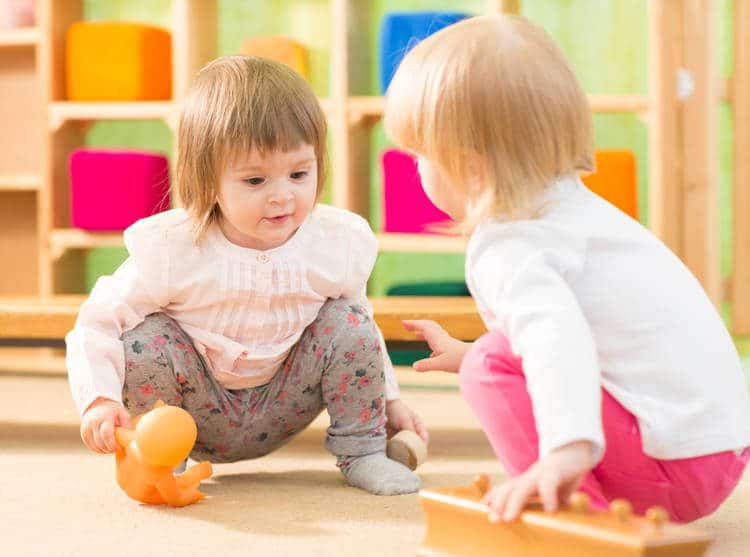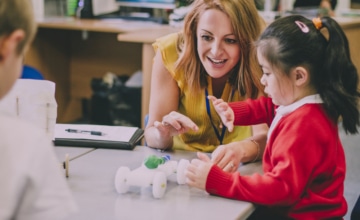Older toddlers, with their physical abilities, problem-solving skills, and love of language, are eager for playmates. Discover what your child is learning as they play at this age and find new ideas for activities you can try to support their development!
Older toddlers, with their physical abilities, problem-solving skills, and love of language, are eager for playmates. Months earlier, they may have watched others playing, or even played side by side with another child. Now, they are beginning to play together… sometimes even without fighting! Your toddler will develop social skills with time, practice, and your guidance.
During this third year, toddlers are able to use their imaginations in their play. A toy broom is not just for sweeping. It becomes a dance partner or a cowboy’s horse. As toddlers approach 3, they play more with peers, making up stories and “rules” for their games. Pretend play also helps them work through difficult experiences, like saying good-bye to a parent at child care.
Games to Play
Family and Friends
Invite a friend over to play. Visit the neighborhood park or a cousin’s home. These are great opportunities to help children learn to share and resolve conflicts. Toddlers learn new skills by watching other children, too.
Say It With Music
“Freeze” and “Hokey-Pokey” are fun musical games. They offer opportunities to listen and follow directions, while teaching about words and sounds. They also allow children to exercise their bodies. Toy instruments add to the fun.
Quiet Play
A child’s play doesn’t always have to be full of action. Looking at books, listening to stories, and drawing pictures all build children’s imagination and language skills. Many children also enjoy playing with sand, mud, or dough.
Act It Out
Encourage fantasy play by providing dress-up clothes and other props. Use items such as hats, scarves, backpacks, bowls and containers, music makers, and more. Join in—as you play, help children expand and build on their ideas.
What They’re Learning
This example shows how even during simple play times, babies are learning so much from you.
Tanya is watching her almost-3-year-old daughter, Maria, play with her friend Ben. They are pretending to be kittens. Mom helped them draw whiskers using her makeup. Their tails were once stockings. Maria and Ben crawl around on all fours and “meow.” Tanya sets a shoebox “bowl” of imaginary milk on the floor. “You’ll have to take turns like nice kitties do.” Maria and Ben giggle in between slurps. Maria then notices that Ben’s tail is longer. “I want the big tail!” she shouts as she grabs it. Tanya steps in: “Stop, Maria. You cannot take Ben’s tail!” Tanya decides to redirect them by suggesting they make new tails out of paper that they can decorate. Maria and Ben happily get to work.
When Tanya joins Maria and Ben in play, she helps them develop:
- Creativity as they make their kitty costumes.
- Language skills as they talk together while they play.
- Sharing and self control skills as they take turns “drinking” their milk and when Tanya helps Maria understand limits.
- Problem-solving skills as Tanya helps them work through the tail crisis.
- An understanding of symbols as they use the shoebox in place of a bowl. This will help them get ready to learn skills that require symbolic thinking like reading and math.




